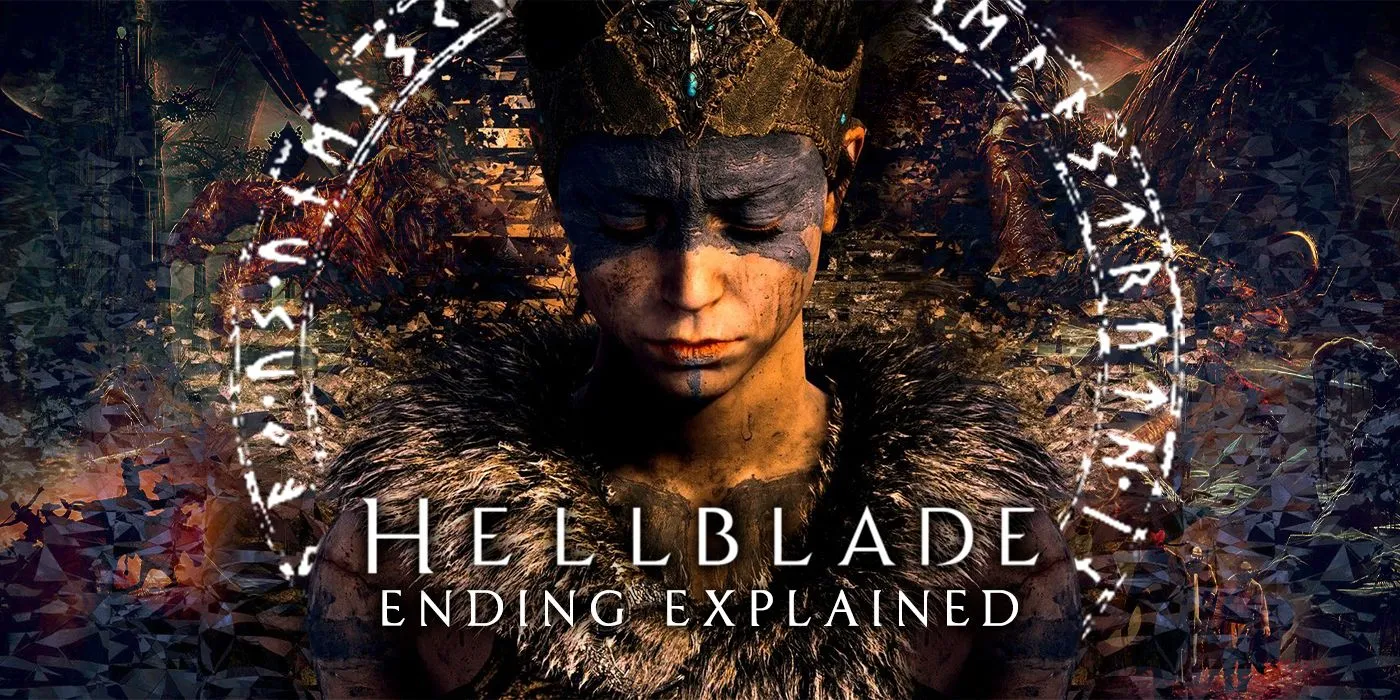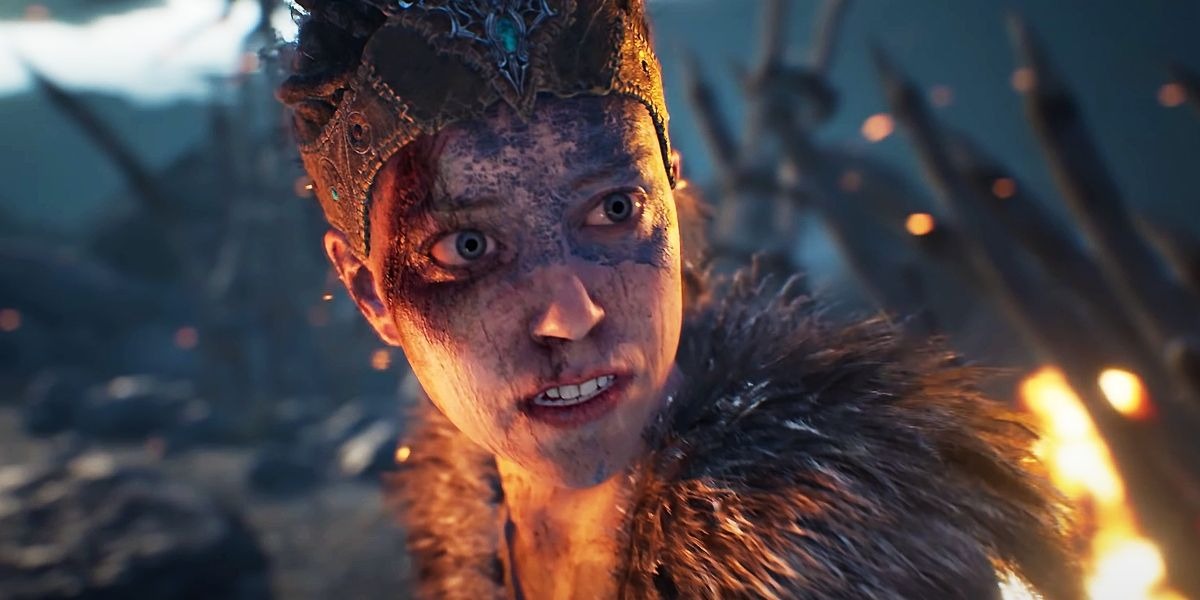Senua’s Sacrifice offers a gripping exploration of a life marked by trauma and mental struggle. The central conflict in the game isn’t just about rescuing Dillion’s soul; it’s about Senua’s battle with psychosis. She journeys through Helheim, a Norse-inspired afterlife.
She faces an overwhelming barrage of voices, known as the “Furies.” These voices constantly cast doubt on her sanity, taunt her with insults, and amplify her fears. While sometimes providing helpful advice or hints, they are always present, relentlessly tormenting her.

While I can’t fully comprehend what it’s like to experience psychosis, Senua’s Sacrifice does an impressive job of conveying the constant mental fatigue that comes with such an affliction. Psychosis is more of a symptom than an illness itself, and its causes vary.
So it makes sense that Senua’s condition would be driven by something deep within her. And she certainly has her share of troubles to fuel it. On her mission to save Dillion, Senua faces several challenges set by mythical beings, such as the fire god Surt and the illusionist Valravn.
She must overcome their trials to enter Helheim and reach Dillion’s soul. However, things take a dark turn when the trickster god, Hela, ambushes Senua, sending her on a series of new trials leading to Gramr, a sword capable of killing Hela.
Throughout these trials, Senua’s tragic relationship with her father comes to light. Her father, Zynbel, had her mother burned at the stake after learning that she, too, had the “curse” that Senua now suffers from.
This traumatic event left a lasting scar on Senua, who was only five at the time. Afterward, Zynbel convinced her that she, too, was evil and cursed, leading him to abuse her both physically and mentally. Senua then finds love with Dillion, but after a plague decimates his village, she flees, believing she caused the disaster.
Upon her return, the village is raided by Norsemen, and Dillion is brutally killed. It’s easy to see why Senua would believe her father’s misguided claims that she was cursed and evil.
The Dark Night Rises
The belief that she’s cursed becomes a powerful part of Senua’s story. She’s trapped in a web of deception that, much like the game’s fake permadeath mechanic, creates a sense of constant threat.
Every time I died, especially in the sequences where I was enveloped in total darkness, I was haunted by the fear of a permadeath lurking just around the corner. This lie, much like the dark journey of Senua herself, infects everything in its path.
As the story moves towards its climax, darkness becomes a metaphor for the mental strain Senua endures. A fight against Garm, the mythical dog of Helheim, takes place in nearly complete darkness, lit only by Senua’s sword and flashing holographic images.
The twenty-foot-tall mutant wolf stalking in the shadows only adds to the intensity. If the usual seizure warnings in games are like tornado alerts, this scene required something far more urgent—a panicked weatherman warning of an F5 tornado. This sequence is visually overwhelming.
Senua eventually comes to understand that the darkness is symbolic of the abuse her father subjected her to, but it also represents the fog of mental illness. The lack of clarity and the lurking threats, both real and imagined, are something many people with mental health conditions understand.
Senua’s chaotic battle against the forces in the dark mirrors the helplessness often felt when dealing with mental disorders. Sometimes you just have to keep fighting blindly, hoping for a lucky break, while fearing the damage that might come from each misstep.
The unrelenting presence of the darkness and the constant barrage of voices from the Furies help those who don’t suffer from such conditions understand the overwhelming nature of mental illness.
There were moments when I couldn’t take the voices anymore, shouting “Just shut up!” as the Furies filled my mind with distractions at the worst possible times. This is a glimpse into the experience of living with psychosis.
Sweet Surrender
In the final battle, Senua faces wave after wave of enemies from Hela. The constant assault wears her down, and I could feel my frustration mounting: “How am I supposed to survive this?” The answer? You don’t. Eventually, you have to surrender.
That surrender becomes part of the game’s metaphor: Sometimes, to progress, you have to let go. Once Senua succumbs to the onslaught, Hela “kills” her, taking Dillion’s head from her and tossing it into the abyss.
But in a twist, the camera pulls back to reveal Senua standing where Hela once was, indicating that Senua herself was the true force behind her demise. It’s a moment of realization that reflects her journey to self-acceptance.
Hope Amongst the Sad, Brutal Ambiguity
The game’s ending leaves much to be interpreted. We see Senua perhaps coming to terms with the fact that she cannot bring Dillion back, yet there’s still uncertainty about what we’ve witnessed throughout the game. Is her curse something she has accepted as part of her life, or has she finally gained control over it?

The final voices in her head vanish, only to return with Senua’s cryptic comment, “Wait…It’s different.” This could signify a newfound level of control over the voices that plagued her. Leaving us with more questions than answers, the ending reflects the ongoing nature of mental illness.
Healing is not a clean, total process. It’s gradual, messy, and often brutal. The recognition of her struggle, even if it’s not fully resolved, marks the beginning of healing. By the end of the game, Senua is in a better place than where she started, and in the realm of mental health, that’s a victory.
As she walks off after her final words, there’s a sense of closure and anticipation. We’re left ready for the sequel, Senua’s Saga: Hellblade 2. The creators have made it clear that this will not be a direct continuation, which adds a layer of mystery to Senua’s closing remarks.
The blurring of realities in the game now seems to extend to the timelines as well.



